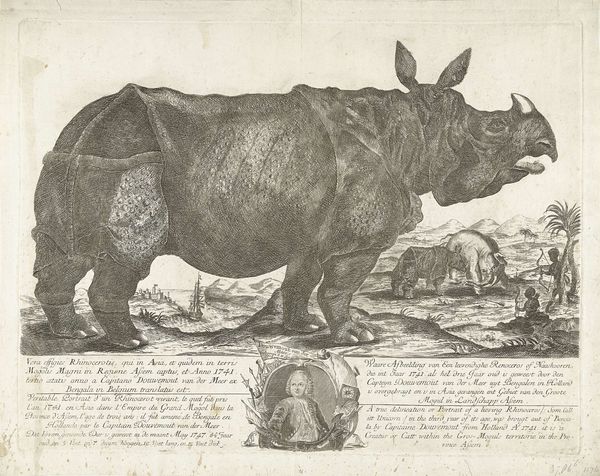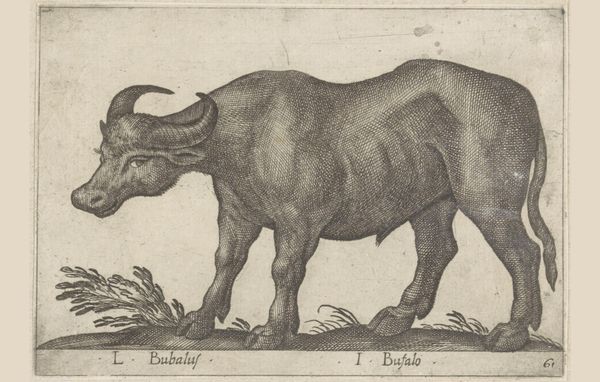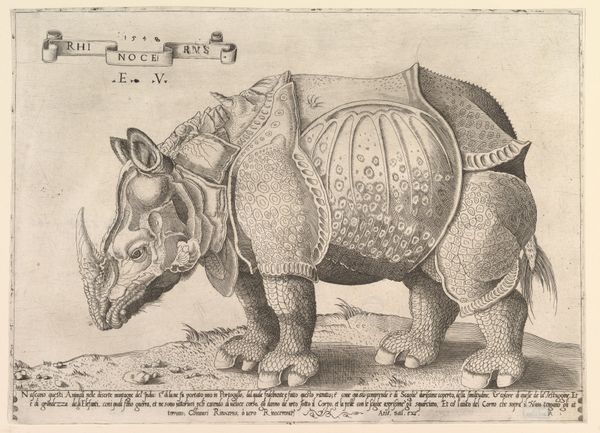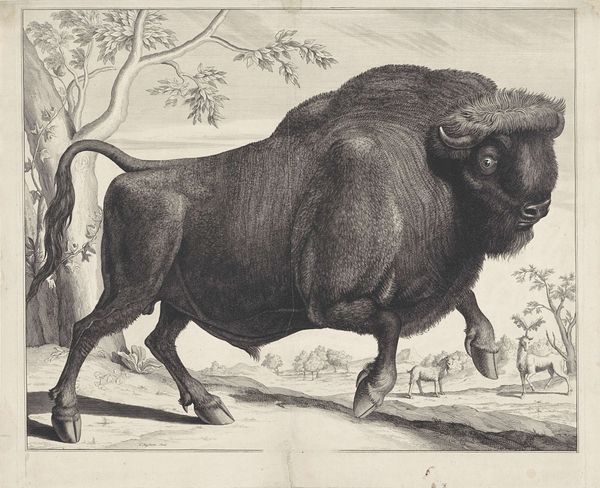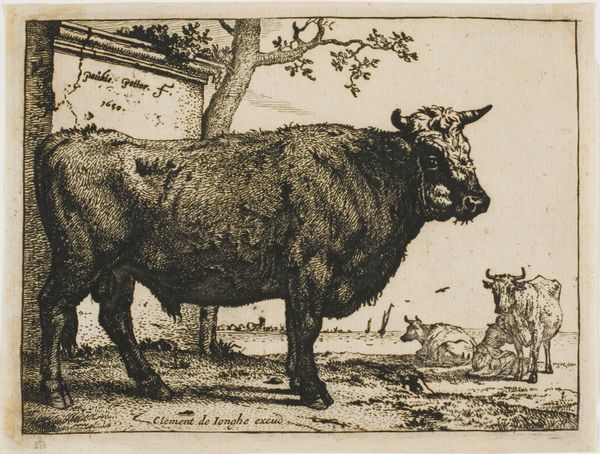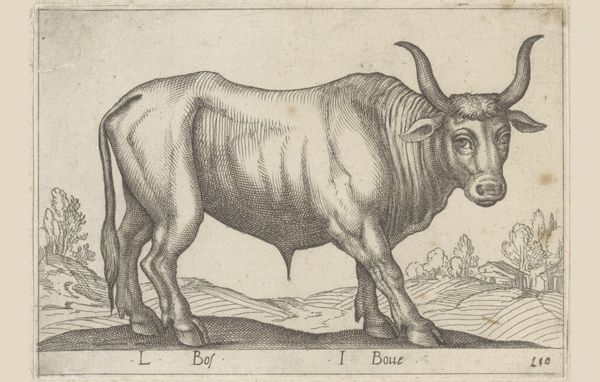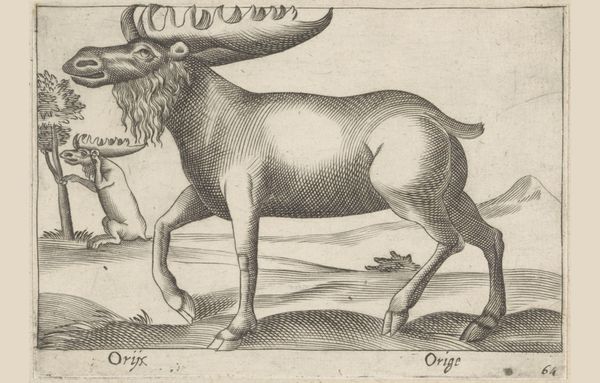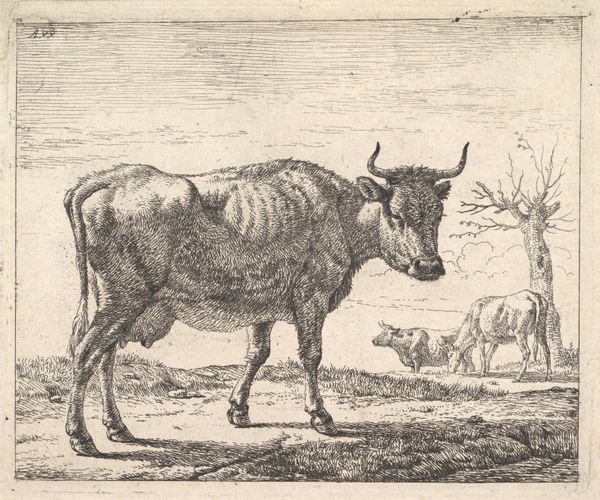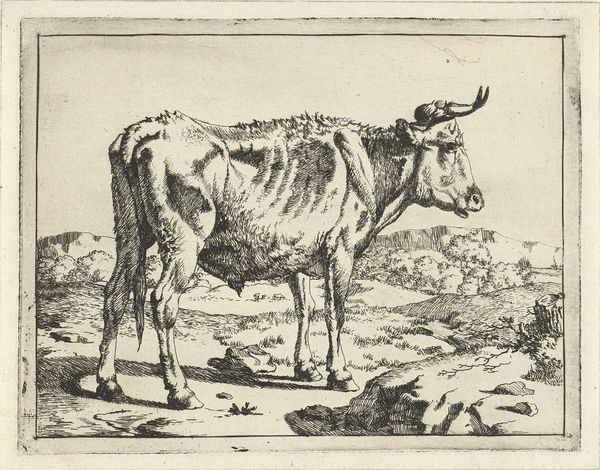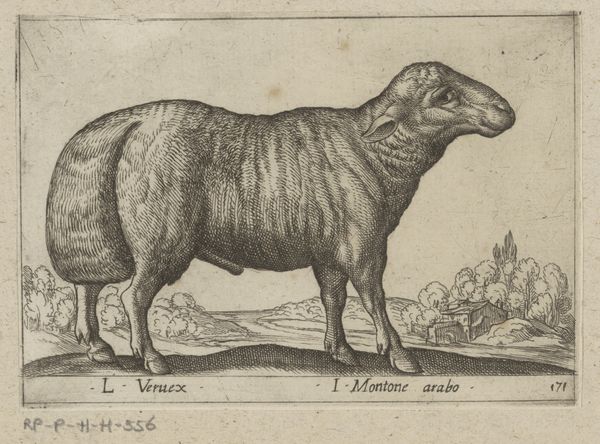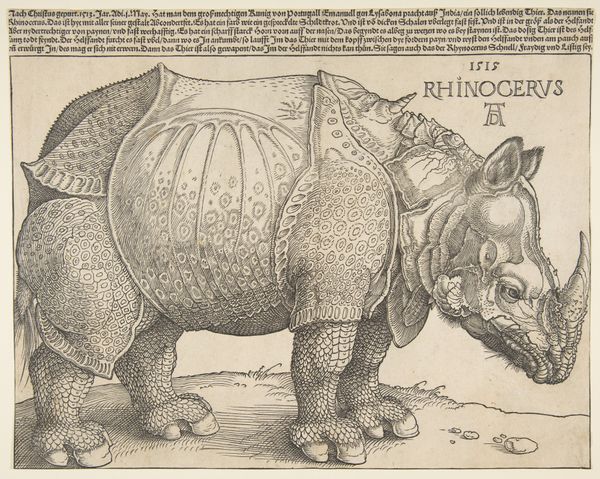
print, engraving
#
portrait
#
baroque
#
animal
# print
#
old engraving style
#
history-painting
#
engraving
#
realism
Dimensions: height 449 mm, width 558 mm
Copyright: Rijks Museum: Open Domain
Curator: Here we have "De neushoorn Clara, komt dat zien !", an engraving created in 1747. Editor: My first impression is its meticulous detail! The texture of the rhino's skin, the tiny figures in the background – it's remarkably precise and evocative. It feels almost documentary, yet romanticized at the same time. Curator: It's a product of its time. This piece captures the sensation Clara, the rhino, caused as she toured Europe. But it's more than just a depiction; consider the printmaking process, the labour involved. This engraving wasn’t about pure aesthetics, but also about circulating knowledge and wonder, feeding the growing public appetite for the exotic and monstrous. Editor: Absolutely, the context is vital. However, looking at it formally, I'm drawn to the contrast between the static pose of Clara and the bustling background scene. The artist uses line work masterfully to differentiate textures. It pulls you into the composition, making you actively decode its layers. It isn't simply an informational diagram, it’s deliberately constructed to lead the eye. Curator: And it’s important to consider who had access to this knowledge. Prints like this were part of a burgeoning market for curiosities, largely consumed by the merchant and aristocratic classes. What was left out of the image also is meaningful - the violence of animal capture and the conditions that facilitated Clara’s journey are glossed over in favour of a story about wonder. Editor: A fair point. Though if we are looking to dissect it from a strictly artistic lens, it’s the very contrast and shading that elevates this piece, drawing the eye into those complex and omitted stories. It's about deciphering how those artistic choices inform our understanding of the represented subject and how aesthetics shape knowledge. Curator: Yes, that push and pull between representation and historical conditions creates something greater than the sum of its parts. Editor: Precisely, that interaction truly underscores the potency embedded within the artwork itself.
Comments
No comments
Be the first to comment and join the conversation on the ultimate creative platform.
